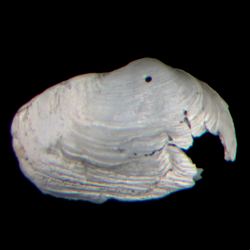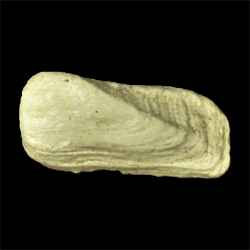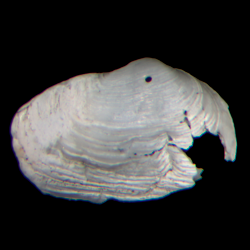
Hiatellidae

- Phylum: Mollusca
- Class: Bivalvia
- Order: Imparidentia
- Family: Hiatellidae
Overview
Common name: Hiatella clams, rock-borers, and geoducks
Key morphological features: The Hiatellidae are small to large in size, up to 300 mm. The shells are equivalve and solid, with an elongated, oval, or trapezoidal shape that is longer than it is high. Most species gape at both the anterior and posterior end. The shell is composed of aragonite and exterior sculpture is smooth or weakly commarginal. Some species have radial rows of spines. Valve interiors are non-nacreous. The pallial line is deep and often discontinuous with a distinct sinus, and the interior shell margins are smooth. Species of Hiatellidae are isomyarian (both adductor muscles equal in size) or slightly heteromyarian (one adductor smaller than the other). The heterodont hinge has one or two weak denticles and sockets, although these are lost in larger adults. Source: Mikkelsen, P.M., and Bieler, R. 2008. Seashells of Southern Florida: Bivalves. Princeton, New Jersey: Princeton University Press. 503 pp.
Geological range: Permian to Recent (Mikkelsen & Bieler, 2008).
Geographic distribution: A distributional map for modern Hiatellidae may be accessed from OBIS. A distributional map for ancient Hiatellidae may be accessed from the Paleobiology Database.
Diversity: There are 21 recognized living species of Hiatellidae and 4 genera (WoRMS database, unvetted). The Paleobiology Database recognizes 5 fossil genera and 74 fossil species of Hiatellidae (unvetted).
Paleoecology: The Hiatellidae are marine suspension feeders that exhibit extreme interspecific variety. They may be found infaunally in shallow to deep burrows, as well as nestling into rock crevices or using mechanical abrasion to bore into soft rock. Hiatellids are found worldwide in varied environments, from cold and subantarctic waters to the deep sea. Source: Mikkelsen and Bieler (2008).
Phylogenetic status: Unknown.

